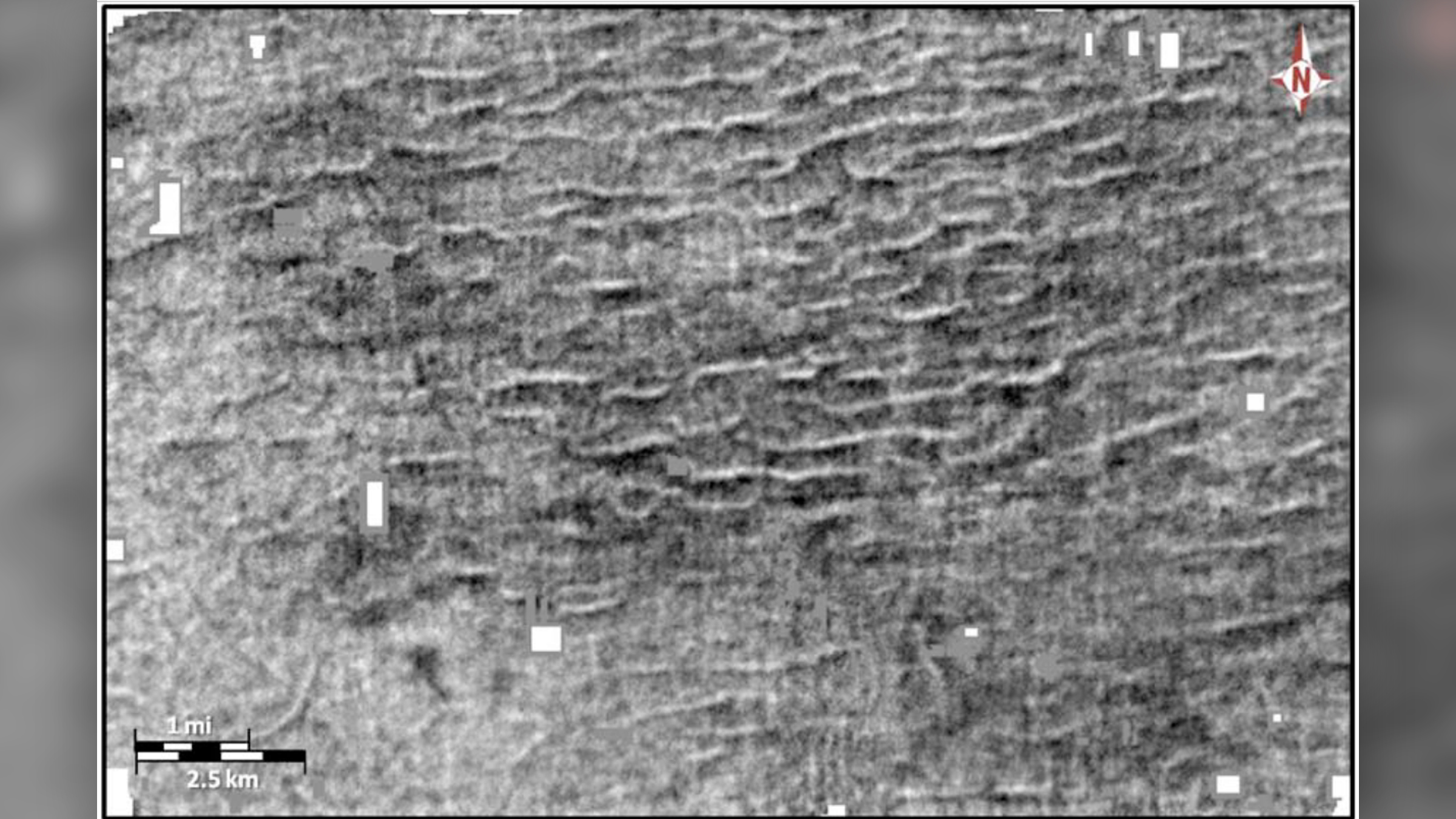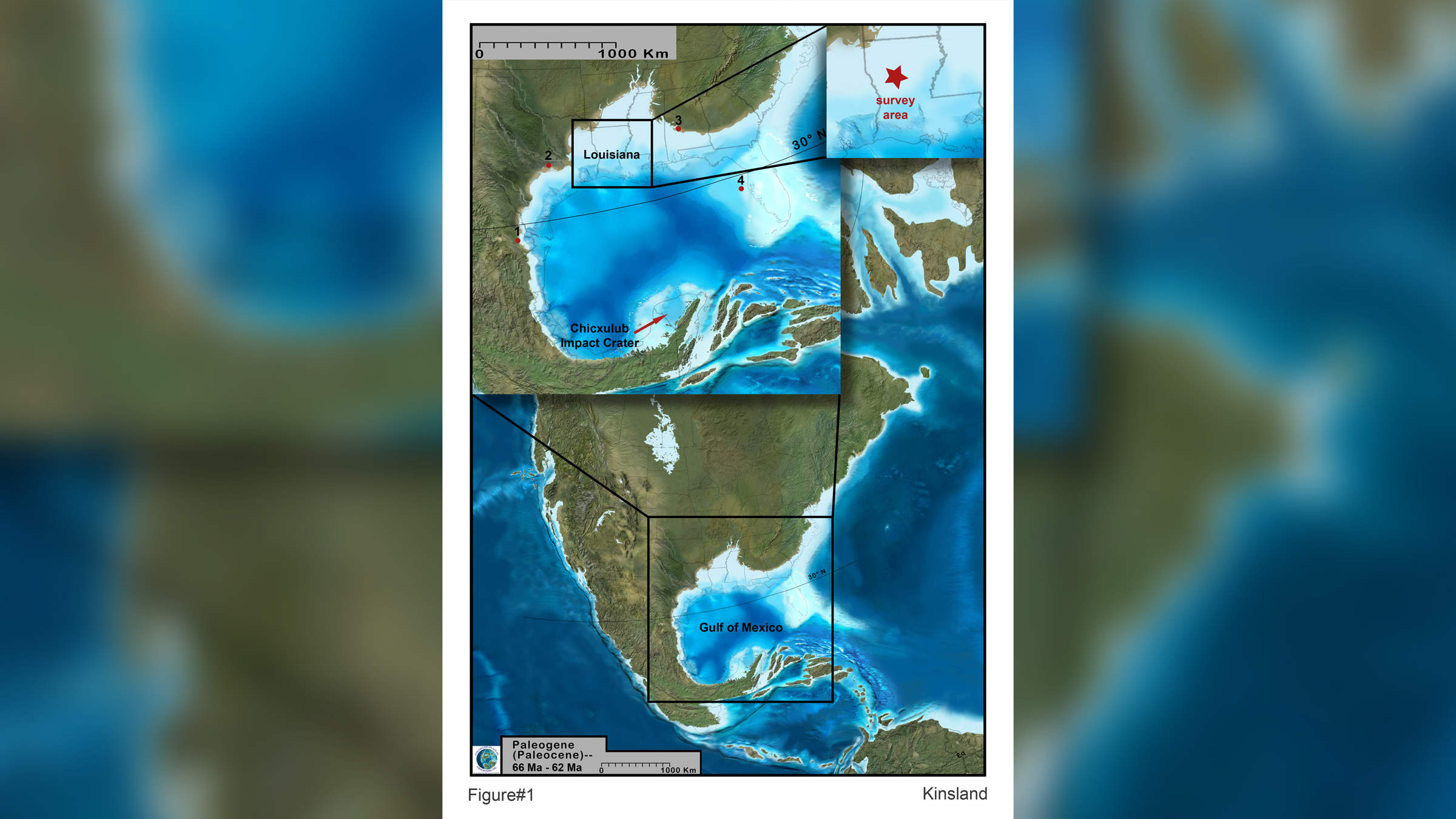52-foot-tall 'megaripples' from dinosaur-killing asteroid are hiding under Louisiana
These are the largest known megaripples on Earth.

Ancient "megaripples" as tall as five-story buildings are hiding deep under Louisiana, and their unique geology indicates that they formed in the immediate aftermath of the asteroid strike that killed the nonavian dinosaurs, a new study finds.
The 52-foot-tall (16 meters) megaripples are about 5,000 feet (1,500 m) under the Iatt Lake area, in north central Louisiana, and date to the end of the Cretaceous period 66 million years ago, when that part of the state was underwater, the researchers said. The megaripples' size and orientation suggest that they formed after the giant space rock, known as the Chicxulub asteroid, slammed into the Yucatán Peninsula, leading to the Chicxulub impact tsunami, whose waves then rushed into shallower waters and created the megaripple marks on the seafloor, the researchers said.
The occurrence of "ripples of that size means something very big had to disturb the water column," study lead researcher Gary Kinsland, a professor in the School of Geosciences at the University of Louisiana at Lafayette, told Live Science. "This is just further evidence that the Chicxulub impact ended the Cretaceous period."
Related: In images: How North America grew as a continent
The project began when the energy corporation Devon Energy took a 3D seismic survey of Iatt Lake. A seismic survey entails creating loud sound waves (often made with "explosives or big thumps," Kinsland said) and placing surface detectors around the area that can capture the returning sound waves, which are reflected when they hit various underground rock layers. Data from these sound waves allow researchers to make maps of the underground geology.
Study co-researcher Kaare Egedahl, then a master's student of petroleum geology at the University of Louisiana at Lafayette, took the Devon Energy data and created a seismic image of the subterranean area. "Kaare brought it to me, and he said, 'What's this?' because it's so different than anything you would expect to see in deposits laid down by the sea or by rivers," Kinsland said. "I looked at it, and I went 'OMG.'"

Kinsland had previously studied the Chicxulub impact crater. When he looked at the seismic image, "I immediately saw the ripples, and I immediately knew the direction the water would have had to have been traveling [to create them]," he said. "And I knew that if you go backwards from that, you run right in Chicxulub."
Get the Space.com Newsletter
Breaking space news, the latest updates on rocket launches, skywatching events and more!
Kinsland was able to determine the tsunami's direction because the megaripples are asymmetrical, which shows the direction the water was flowing when they were made. In this case, the long, asymmetrical side of the megaripples have a south-southeast-facing slope, which points back to the Chicxulub impact crater, he said.

The megaripples have an average wavelength (from one crest to the next) of 1,968 feet (600 m). That, combined with their 52-foot-high amplitude, makes them "the largest ripples documented on Earth," the researchers wrote in the study.
Moreover, these megaripples are at the top of the Cretaceous/Paleogene geological boundary dating to 66 million years ago, and lie beneath a layer of debris that were kicked up in the aftermath of the Chicxulub impact, the researchers wrote in the study.
Related: Waves of destruction: History's biggest tsunamis
How did the megaripples persist?
The megaripples indicate that after the space rock hit Earth 66 million years ago, a tsunami rushed across the Gulf of Mexico and then shoaled and broke offshore as it "reached the abrupt shallowing of the Gulf of Mexico within what is now central Louisiana," the researchers wrote in the study. "The resulting pulses of water flowing north-northeast over the shelf area produced the asymmetric megaripples which are imaged within the seismic data."
But tiny ripples left by waves on a sandy beach are short-lived. So how did the megaripples persist for 66 million years?
After the tsunami created the megaripples, they remained underwater. They were deep enough underwater that when storms swept through the Gulf of Mexico, the megaripples remained undisturbed, Kinsland said. Then, the megaripples were buried by shale — in essence, a sedimentary rock made of mud mixed with clay and mineral fragments — over a period of about 5 million years, during the Paleocene epoch (66 million to 56 million years ago), he said. Later, that shale was covered by even younger sediments, he added.
The study was published online July 2 in the journal Earth and Planetary Science Letters.
Originally published on Live Science.
Join our Space Forums to keep talking space on the latest missions, night sky and more! And if you have a news tip, correction or comment, let us know at: community@space.com.

Laura is an editor at Live Science. She edits Life's Little Mysteries and reports on general science, including archaeology and animals. Her work has appeared in The New York Times, Scholastic, Popular Science and Spectrum, a site on autism research. She has won multiple awards from the Society of Professional Journalists and the Washington Newspaper Publishers Association for her reporting at a weekly newspaper near Seattle. Laura holds a bachelor's degree in English literature and psychology from Washington University in St. Louis and an advanced certificate in science writing from NYU.










